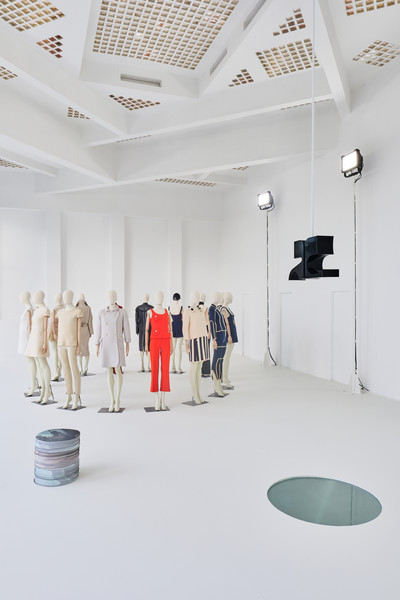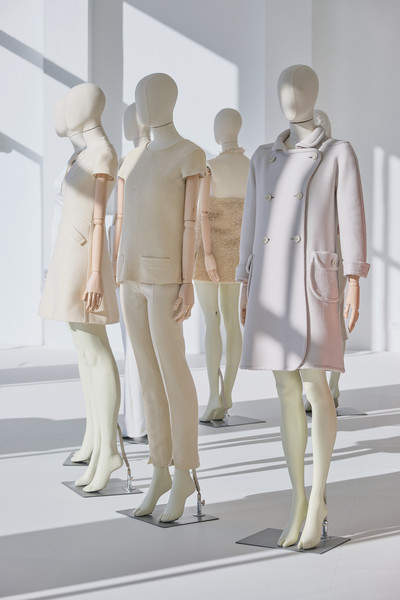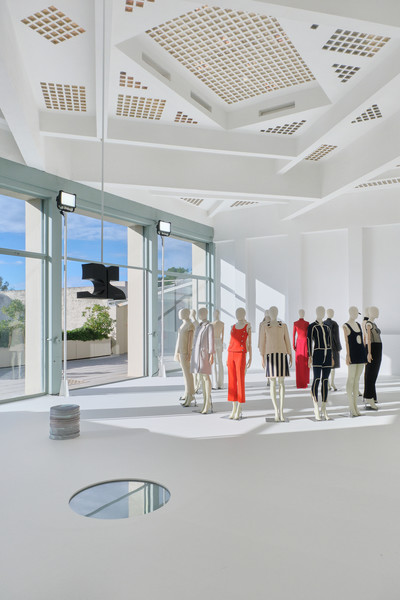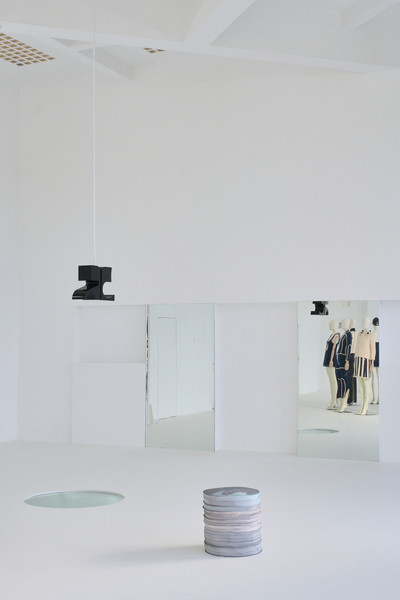Nicolas Di Felice
A symmetry of shape connecting architects of kindred ambitions.
Three elements of a visual equation – the ideal modernist villa of Robert Mallet-Stevens, the cult cuts of couturier André Courrèges, the post-modern interpretations of Courrèges’ artistic director Nicolas Di Felice.
A visual triangulation imagined by Di Felice and scenography director Rémy Brière in the multifold volume of the villa’s indoor pool.
Set in three acts, this reductive exhibit is experienced before, during, and after you enter the space.
Before, the distant pulse of high-BPM bass quilts the garden like an invisible path.
During, the six faces of a cube incorporate a condensed history of Courrèges silhouettes while revealing the narrative potential of the building.
Three circular shapes frame the vastness of heritage-white flooring.
Sixteen silhouettes shared evenly between archival and contemporary collections face each other in a ritualistic circle, reenacting a chronology of Courrèges classics.
Cut through the ground, a round window glimpses at a pool party unfolding underfoot.
Club-inspired strobe lights and smoke effects, engineered by the Matière Noire studio, charge this counter-space with dramatic effect, creating a palpable sense of anticipation.
On the side, a pile of round-cut posters feature Courrèges Club memorabilia shot by Cha Gonzales, allowing visitors to leave with a souvenir of this momentous exhibition.
Through the walls, the muffled techno score composed by Erwan Sene beckons the viewer outward and after.
On the wall, the nearly centurial clock (present throughout all the editions of the festival) enacts one last, circular presence – opening the merging temporalities of this expressive exhibit. Suspended in the room, as in time, the Courrèges logo exposes itself to the ticking geometry of the future…
« Architecture is an art which is basically geometrical. The cube is the basis of architecture because the right angle is necessary – the steps of a staircase consist of vertical and horizontal planes and the corners of rooms are nearly always right angles. We need right angles. »
R. Mallet-Stevens




